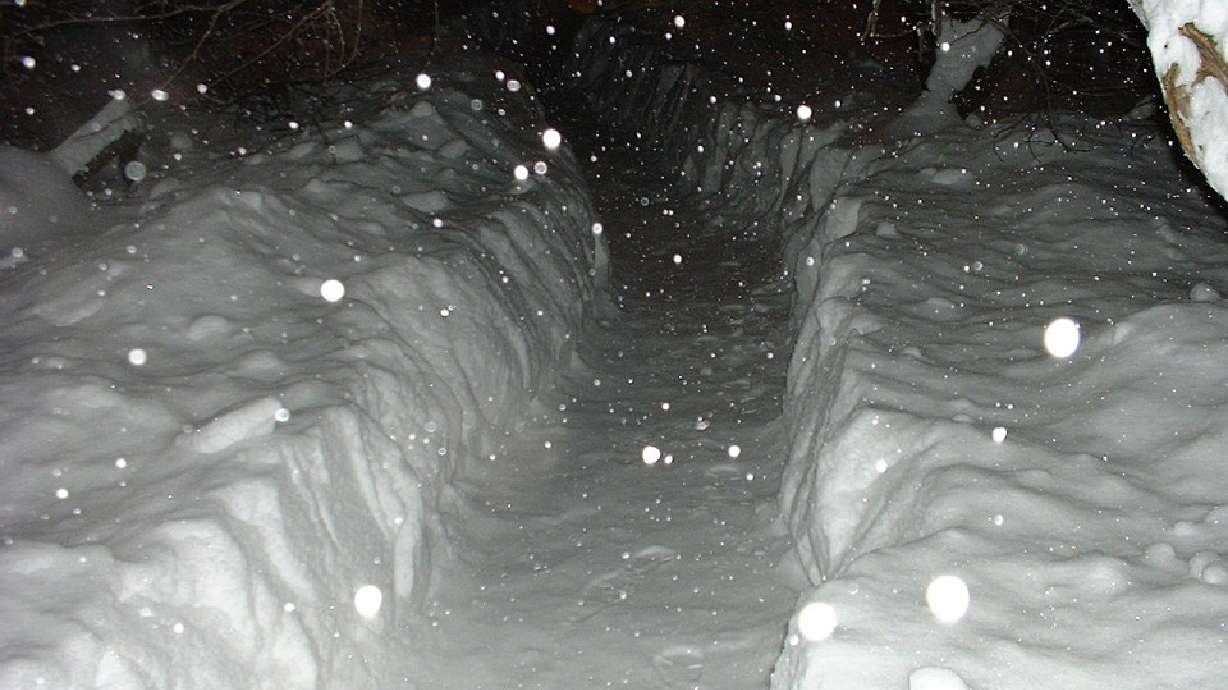Estimated read time: 3-4 minutes
This archived news story is available only for your personal, non-commercial use. Information in the story may be outdated or superseded by additional information. Reading or replaying the story in its archived form does not constitute a republication of the story.
Spring is always interesting for Utah gardeners. Wake up in the morning and look outside? Which shovel do you pick up? The snow shovel or the garden shovel? Will the decision you make in the morning still be the right one in the afternoon? The uncertainty often throws off or confuses us as we garden.
My grandmother was fond of quoting "A pound of prevention is worth a pound of cure." I remember trying to envision a one pound container of cure on her grocery shelf but the value of her advice did not sink in until many years later.
As all gardeners know, timing is critical when you are trying to grow plants successfully in our high mountain desert. Part of your success depends on doing the right task at the right time. This is particularly true when you are trying to control pests.
Consider weed killer applications. Used in a timely manner, they can help you control some serious weed pests that damage your plants and make your life much more difficult. Unfortunately, using them incorrectly damages your desirable plants and costs you dearly both in money and in frustrations.
Preemergent fertilizers help control certain annual weeds including crabgrass, foxtail and spurge. Timing these is critical because as the name implies, these have to be down before the seeds germinate.
I often hear these products called weed preventers. They do not prevent weed but they kill the plants after the seeds germinate. Once the seeds are growing the herbicides are of no value because they cannot at that point, control the weeds.
Along the Wasatch Front, the last date to apply a product to prevent your crabgrass is the same as tax day of April 15th. Although calendar dates are not always applicable, if your crabapples are in bloom, you are probably too late to apply a preemergent product.
Fortunately there are many good products on the market to prevent these weeds. Most of them are long lasting and are highly effective products when used correctly. Check with your local nursery and take care of the problem before it is too late.
One important pest preventive is the dormant oil spray. Once again, timing is critical. Spray too early and the pests are in hiding and you get no control. Spray too late and the pest are already reproducing and you are not getting good control. If you spray after temperatures are too warm, you may even burn your plants and damage them severely.
Several fungal diseases are also likely to show up on your trees this year. In response to those readers who complained last year that I told them why their trees had spots after it was too late to do anything, read on.
Aspen leaf spot makes your aspen leaves get spots and turn black later in the summer. Once they trees show the symptoms, any control measures are too late. Treat them now every two weeks until we get warm dry weather.
Likewise, sycamore anthracnose is a serious problem if we have a wet spring. The spray program is the same. Start spraying when the buds start to break open and continue until the weather changes to continual warm and dry conditions.
Anthracnose symptoms include dead buds and dried dead leaves. After the buds die, the twigs die back and long term may cause severe distortion of your trees. The disease is the worst on sycamores but also hits maples, oaks and other trees.
Make your list and resolve to get your tasks completed in a timely manner and if you ever find "the Pound of Cure", please let me know.
Larry Sagers
Horticultural Specialist
Utah State University Extension Service
Thanksgiving Point Office
© All Rights Reserved









